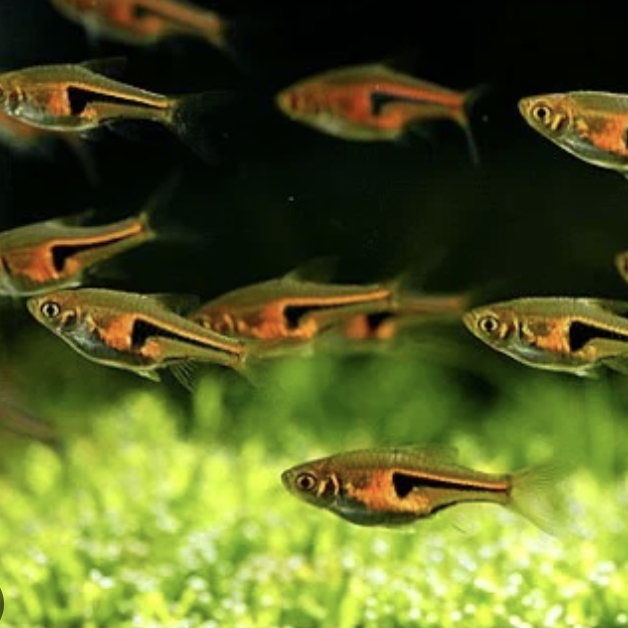Not specified
Rasbora - Hengels (Trigonostigma hengeli)
Rasbora - Hengels (Trigonostigma hengeli)
Couldn't load pickup availability
Hengels Rasbora
Temp- 23-28c
PH- 5-7.5
Diet- Omnivore
Max Size- 3cm
The Hengels Rasbora comes from Southeast Asia on the Malay Peninsula through Singapore, the Borneo and Sumatra Greater Sunda Islands, and probably from Thailand and Cambodia too. Those fish are found in huge groups in nature, filling whole sluggish streams. These tranquil, heavily vegetated waters are calm or flowing gently. Sometimes the decomposing organic waste stains the water with tannins a yellowish-brown. The water is smooth and weakly acidic or neutral, and is well shaded by canopies of the trees. These fish are micro-predators that swim in schools, feeding on small insects, worms, crustaceans, and zooplankton.
For the beginning aquarist the Hengels Rasbora is a great fish, something special for a peaceful community tank. Their exciting, fast-paced lifestyle is even more enthralling than their looks. They absolutely must be kept in a school, as their own species' companionship is essential for their well-being. Groups should be composed of at least 8-10 participants. This is a schooling animal that never leaves the aquarium's upper and middle regions, not even for chasing after food. A school may be housed in a tank as small as 40 litres but they would be better suited to an 80 litre aquarium. They are really fun to watch because they are almost always in motion, producing bursts of orange / red colour.
Use a darker substrate to bring out their best colours and offer them plenty of plants. The tank should be carefully covered as those fish can jump if they are startled or excited.
They are omnivores and their diet should be based on a quality flake or micropellet food supplemented with occasional snacks such as frozen brine shrimp or bloodworms.
Feeding time with rasboras is particularly amusing to watch. They are going to dart to the surface, grab some food, then dive a few centimetres or so and swallow. They repeat this until there's no food left. These fish will look their best several times a day when food is offered but only offer what they can eat in 3 minutes or less at each feeding. Provide what they can eat in about 5 minutes, if you only feed once a day.
Share

